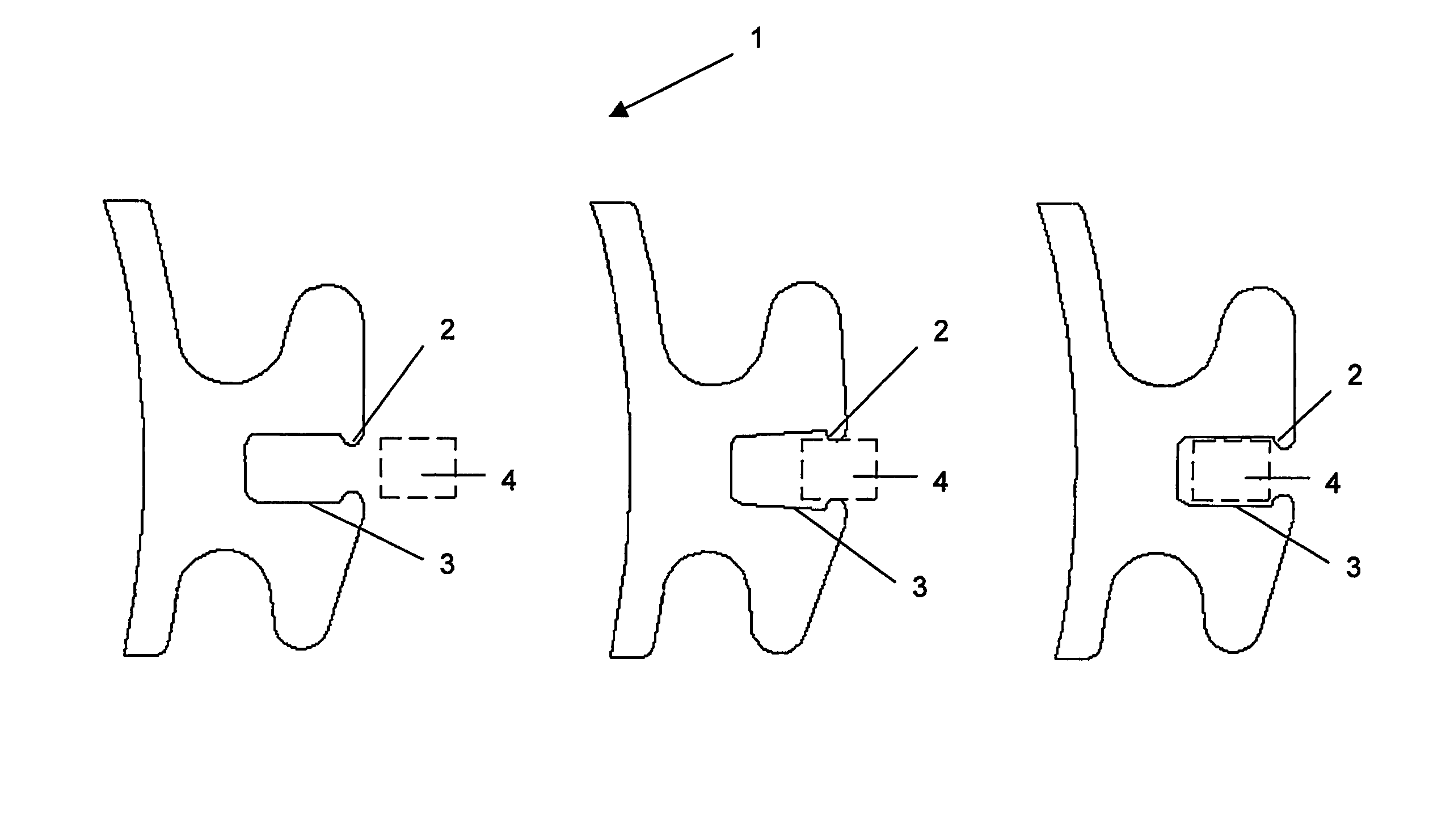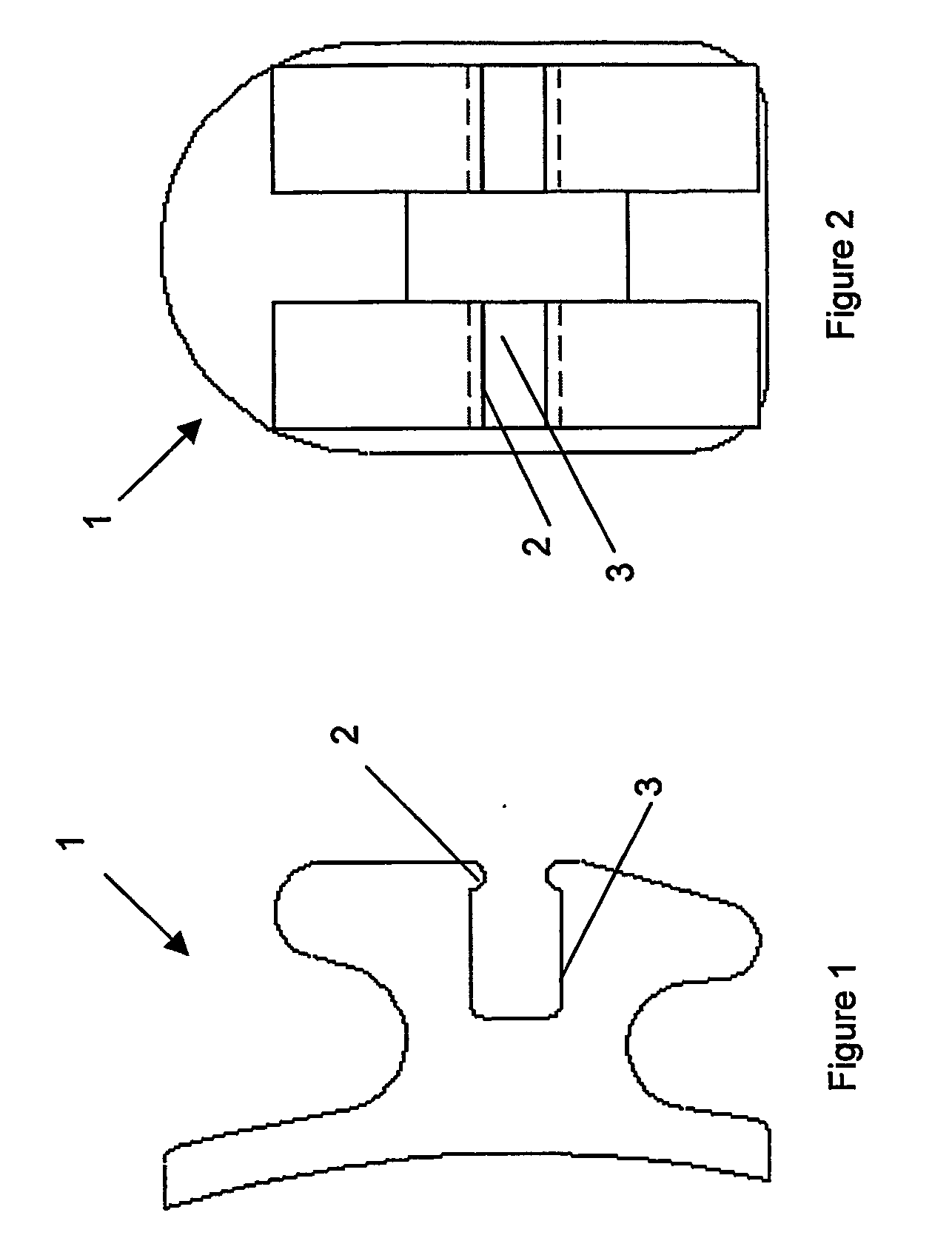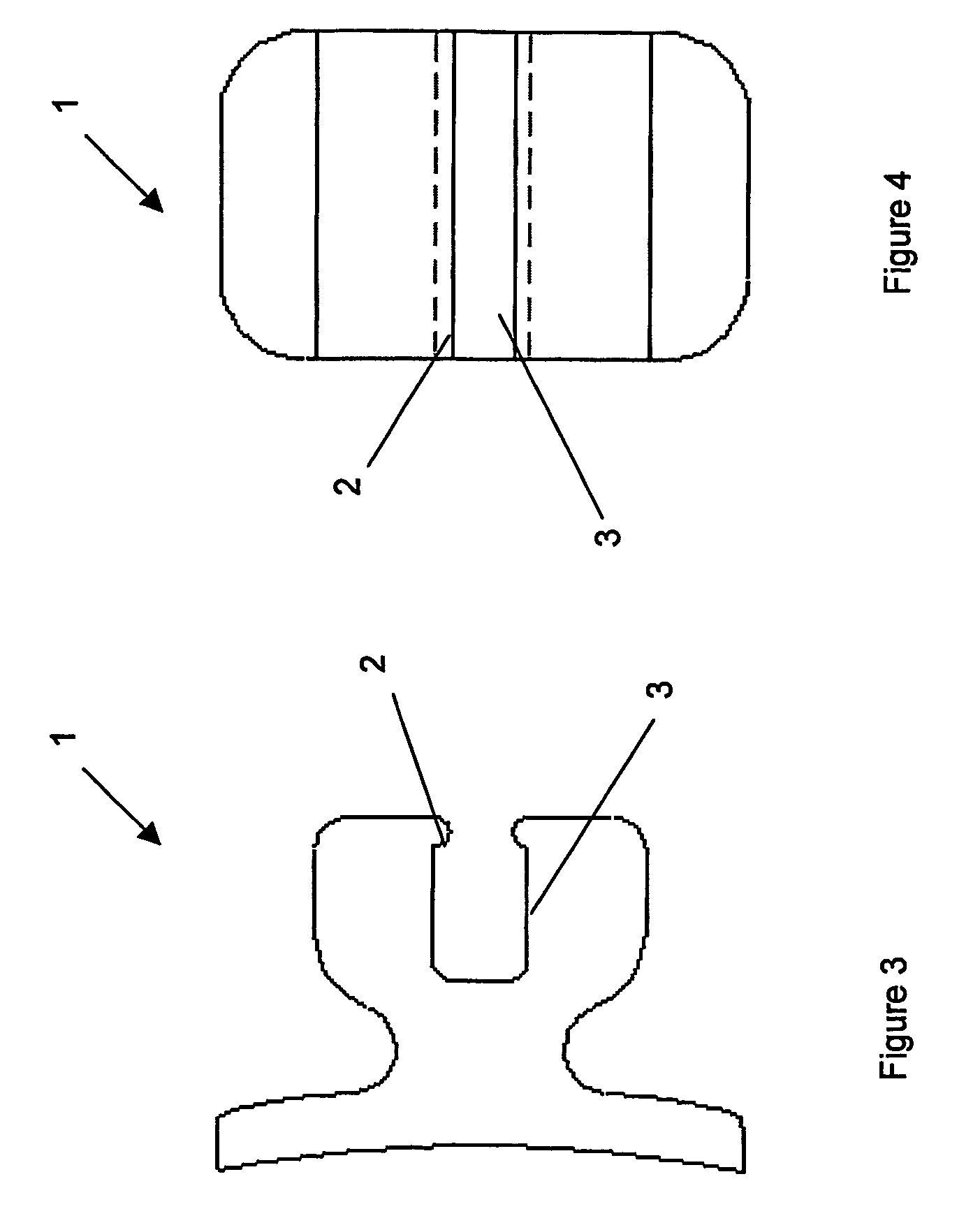Orthodontic Appliance
a technology for orthodontic appliances and appliances, applied in dentistry, medical science, dental tools, etc., can solve the problems of pain to patients, affecting the treatment effect, and reducing the effect of pain
- Summary
- Abstract
- Description
- Claims
- Application Information
AI Technical Summary
Benefits of technology
Problems solved by technology
Method used
Image
Examples
Embodiment Construction
[0041] Referring to FIGS. 1 and 2, the side and front elevation view of one embodiment of the present invention are shown. It can be seen that the present invention provides an orthodontic appliance, such as a bracket 1 which has an integrally formed narrowing 2 proximate archwire slot 3. The narrowing 2 may be provided as strip substantially proximate the length of the slot 3, and / or may be provided only at one or more points proximate the slot 3. The narrowing 2 may also be providing a one or more points or sections along the depth of the slot 3.
[0042] In accordance with the present invention, the extent of narrowing may be used to determine the force(s) needed to install in, remove from and / or adjust an archwire in the appliance slot.
[0043] The present invention also provides, in another aspect, a kinematic inversion of the aspect above, in which the orthodontic appliance has an integrally formed enlarged portion proximate archwire slot. The enlarged portion may be provided as ...
PUM
 Login to View More
Login to View More Abstract
Description
Claims
Application Information
 Login to View More
Login to View More - R&D
- Intellectual Property
- Life Sciences
- Materials
- Tech Scout
- Unparalleled Data Quality
- Higher Quality Content
- 60% Fewer Hallucinations
Browse by: Latest US Patents, China's latest patents, Technical Efficacy Thesaurus, Application Domain, Technology Topic, Popular Technical Reports.
© 2025 PatSnap. All rights reserved.Legal|Privacy policy|Modern Slavery Act Transparency Statement|Sitemap|About US| Contact US: help@patsnap.com



